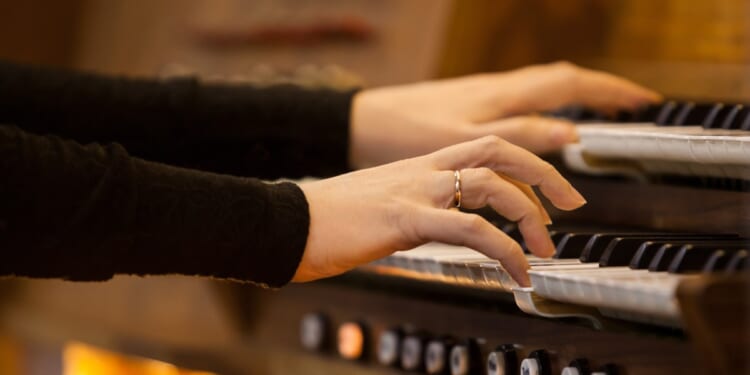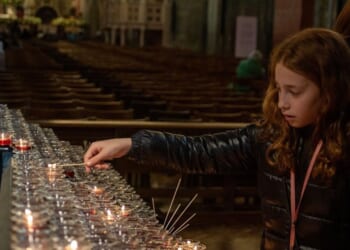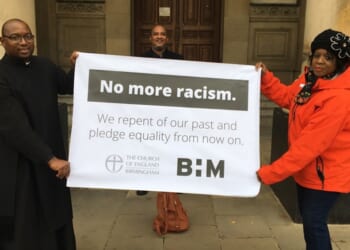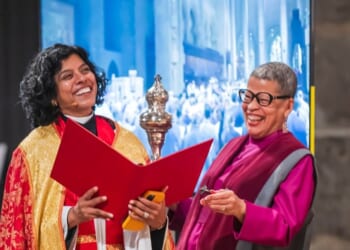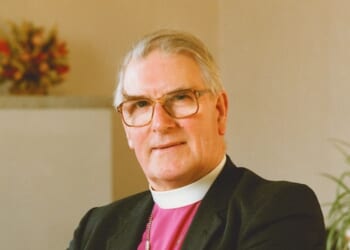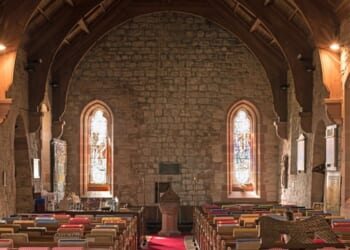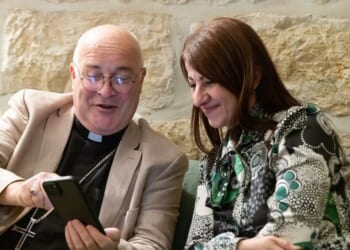THE self-taught German composer Sven Helbig wrote his Requiem A in response to his own feelings of powerlessness and horror that conversations about possible and ongoing wars have again become part of everyday life. Given its première in Dresden in February to mark the 80th anniversary of the end of the Second World War, it had its first British performance in the Methodist Central Hall, Westminster, this month.
The work is is a meditation on human resilience and new beginnings, and it is unusual in that it combines traditional sections of the Latin requiem mass with German lyrics written by the composer, featuring three important “A” words, Anfang (Beginning), Asche (Ash) and Atmet (Breath).
It is built on fourths and fifths throughout, drawing inspiration from the Pythagorean tetractys, the harmonic foundation of the universe. They can be clearly heard in the strings at the beginning and end of the bass arias, and at the start of the Introitus and the Sanctus. Strings, wind, and percussion create the impression of a quiet, sleeping breath that gradually intensifies, culminating in the final movement, “Atmet”. Its nine parts are deliberate. The composer writes: “In the spiritual world, the number 9 stands for new beginnings, for fulfilment, humanity and universality. This is about learning to deal with your own power.”
Under the baton of the Dresden choir’s Kreuzkantor, Martin Lehmann, the London Contemporary Orchestra, and four children’s European choirs — the Dresdner Kreuzchor, Trinity Boys Choir, Poznan Boys’ Choir, and La Maîtrise de Garçons de Colmar — the work opened softly with “Aeternam Requiem ein Atemzug” to a soft drum beat, as the clock struck eight and the lights that the singers were holding flickered on. The drum faded into the Kyrie, the voices arching over the orchestra. Meer von Tränen — “Sea of tears” — and Sana et Vola preceded the Sanctus and Agnus Dei. The Wagnerian bass René Pape, his voice like black diamonds, sang his solos with dignified and portentous gravity. The instrumental Aus der Tiefe — “Out of the depths” — was a sinister evocation of the horror of war, and recalled the Dies Irae from Verdi’s Requiem.
Finally, there was a note of hope. The last movement began with Atra [black], Omnia Atra, intoned syllabically as more voices joined in, closing in a long passage of major harmony, as the young voices sang a wordless line of ah-ah, concluding with not Amen, but “Atem”. Hope exists while there is breath.
The orchestra, unusually, comprised single woodwind and a relatively small string section, but also triple brass and a wide variety of percussion. The composer himself played the synthesiser. “With electronic elements, I can generate frequencies that soar above or rumble beneath the choir and orchestra — deep basses and shimmering highs,” he says. It all made for a varied and fascinating sound palette. Sadly, Máni Sigfússon’s visuals, projected on a screen at the back, seemed to have little relevance and were best ignored.
This is a major work. The problem with future performances will be reassembling the forces involved, especially the massed choirs, whose childish voices demonstrated a perfect synthesis of innocence and experience.

